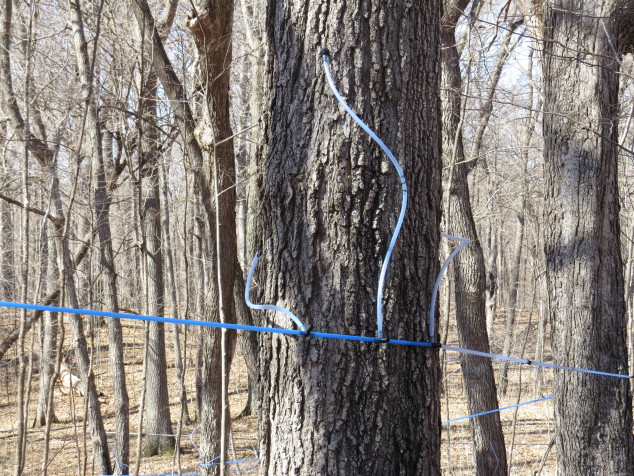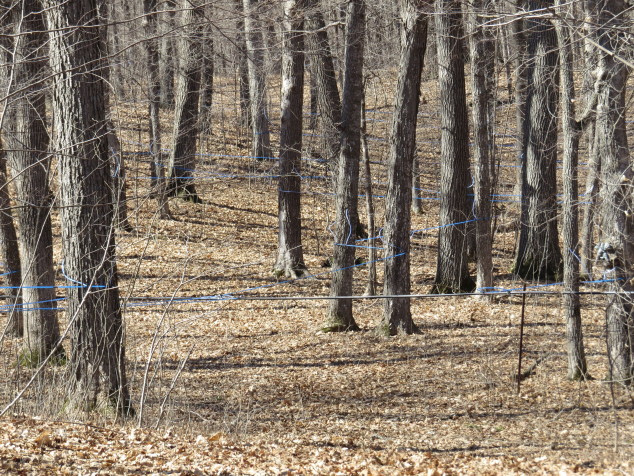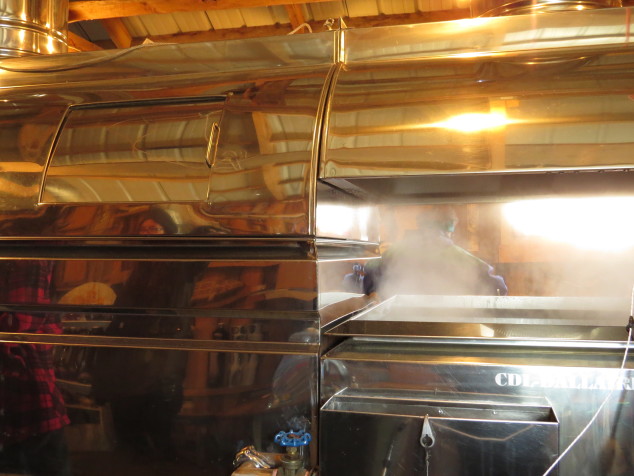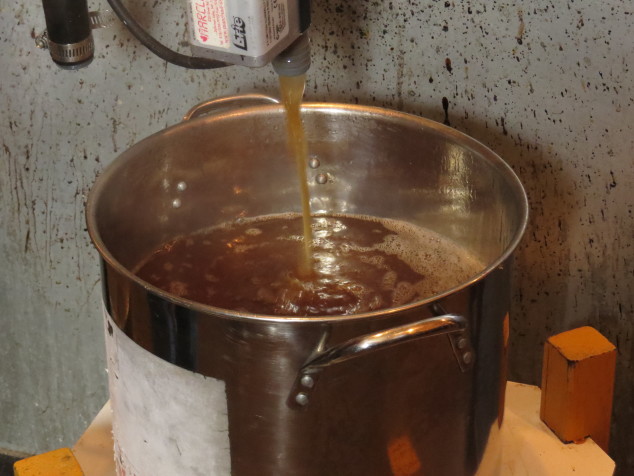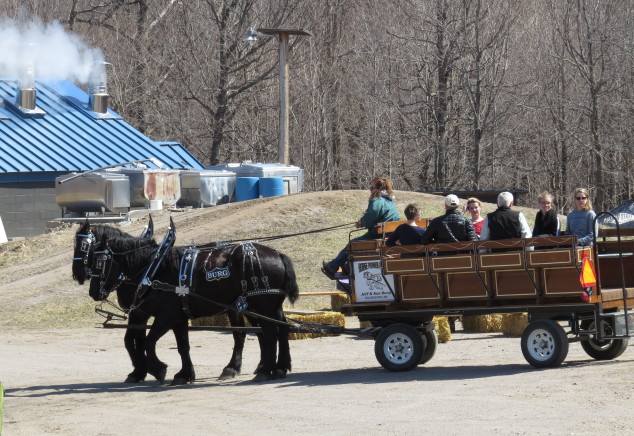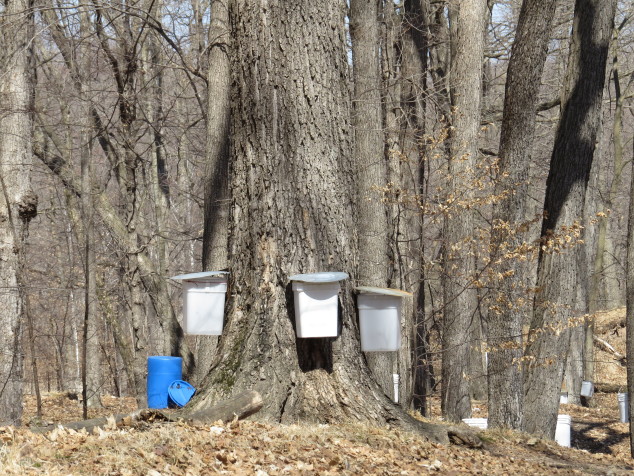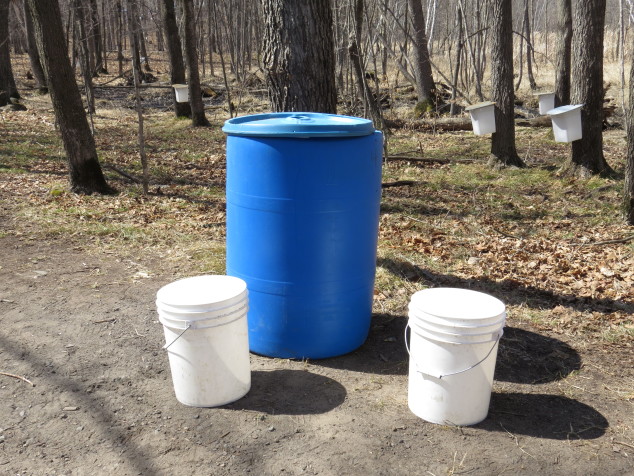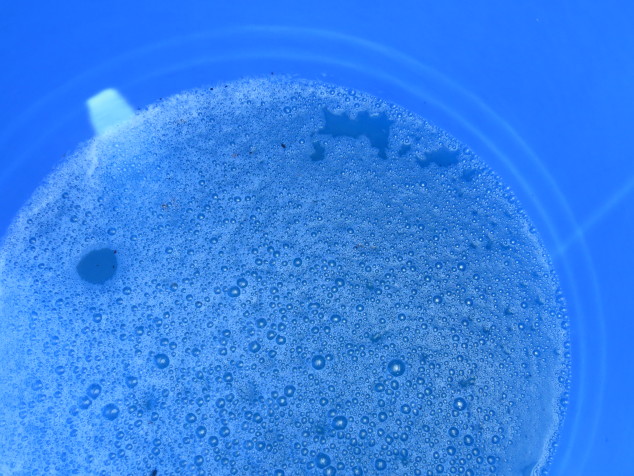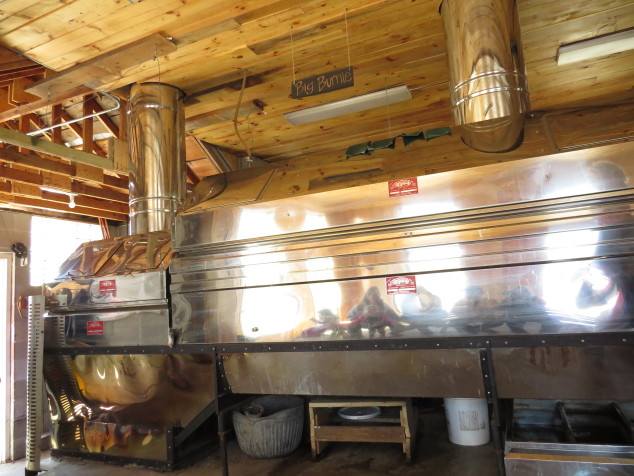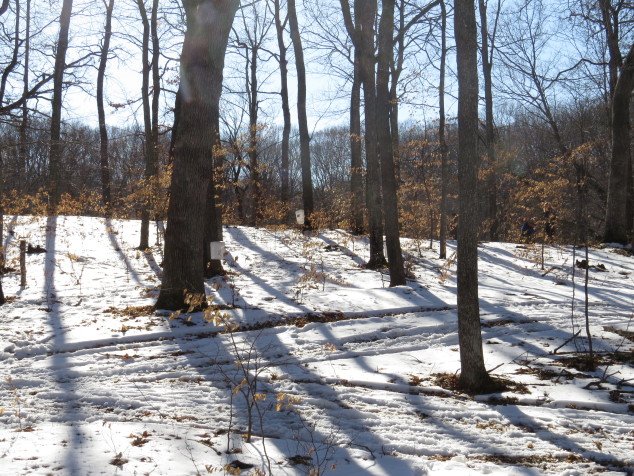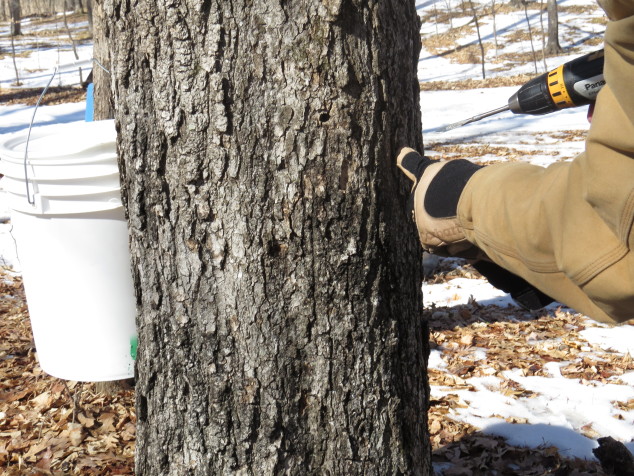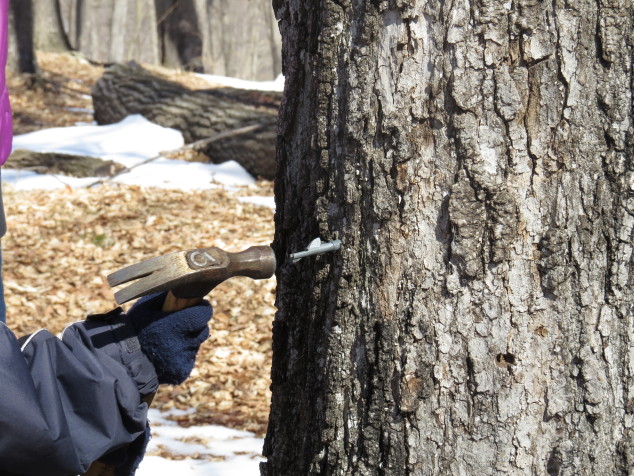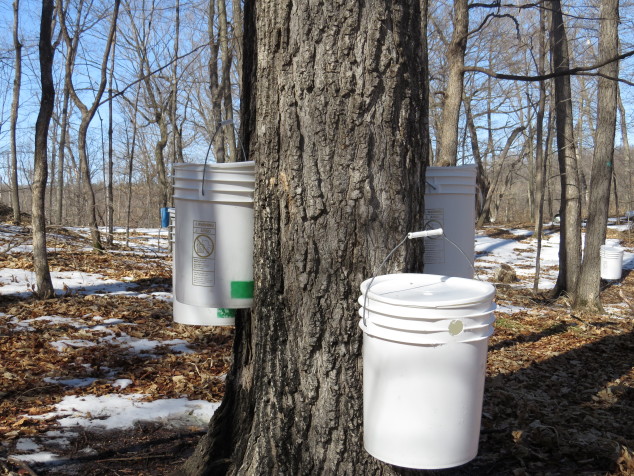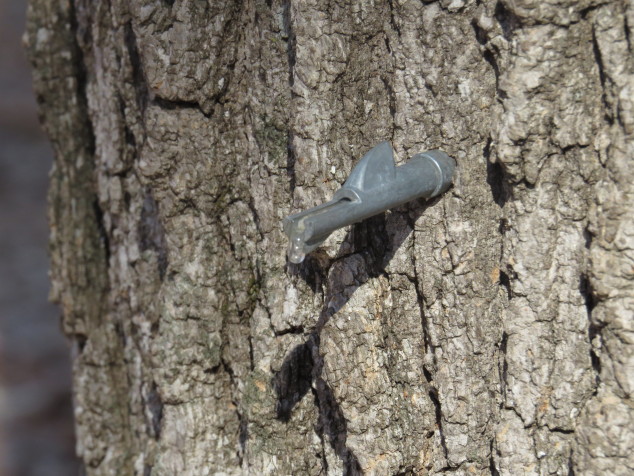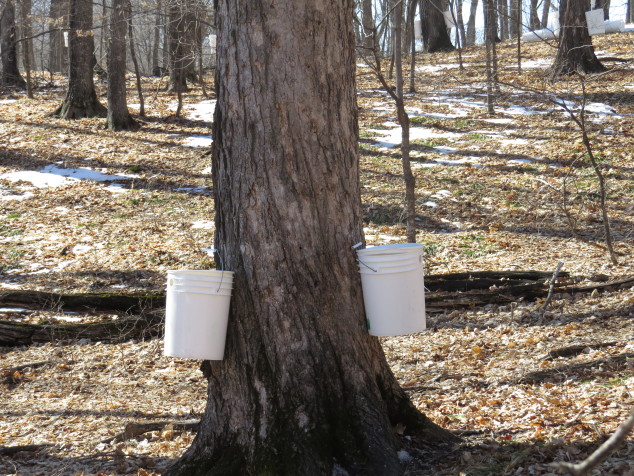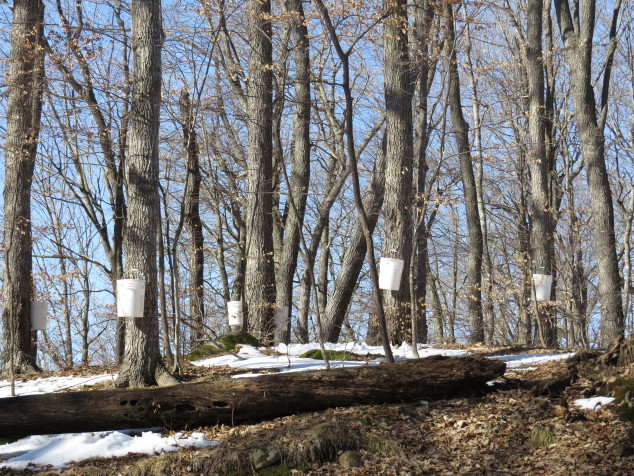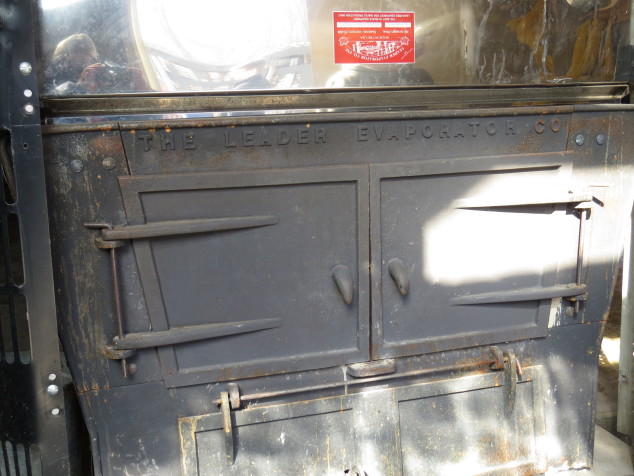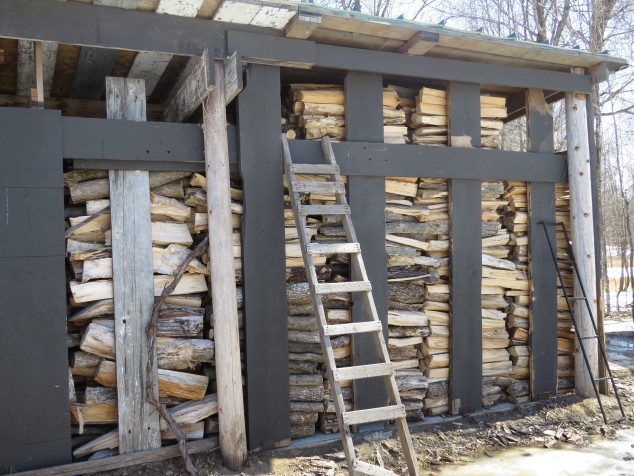Early in March, I wrote about how we learned to tap maple trees at Saint John’s Arboretum. The season of sap and syrup came to an end around the second weekend in April. Two weeks prior to that, we attended an open house at Wildwood Ranch, the only commercial producer of maple syrup in our county. Wildwood Ranch is a family business that has been producing syrup since 1979. Box Elder trees were tapped near the sugar shack on the shore of the ice-covered Kraemer Lake.
But most of the trees in the sugar bush at Wildwood Ranch were tapped and connected to sap lines that criss-crossed the woods.
The sap flowed by gravity-driven vacuum lines to a pump house that moved the sap to holding tanks beside the sugar shack. Sap lines stay up all year and need to be checked in early spring for holes and damage made by nibbling squirrels and deer.
The evaporator fills the middle part of the sugar shack, shiny with its mirror-like stainless steel and hot with its wood-fired box that boils the sap down to syrup.
Sap begins its journey through warming tubes in the top and back of the unit, goes into a large back pan for evaporating water, then finally to the front pan right over the hot fire. It boils until it reaches a certain temperature or sugar level, then it is ‘drawn off’ into a kettle. The syrup is then ‘finished’ in another pan using propane heat for more control, so it doesn’t burn. A filtering process removes the ‘sugar sands,’ which are minerals that are carried into the tree with the sap.
Wildwood Ranch averages 225 gallons of syrup from 11,000 gallons of sap collected in a season from 40 acres of land. They sell their syrup at the local St. Joseph Farmers’ Market and at area businesses.
The ice was gone from the lakes two weeks later when we went to the Maple Syrup Festival at Saint John’s Arboretum. After months of white ice and snow, the lakes looked startlingly blue!
Three teams of muscular Percherons pulled wagon loads of people from the parking lot to the Sugar Shack. Activities included tapping and collection demonstrations, Native American syrup-making demonstrations, informational booths, tours of the Sugar Shack, live music, and hot maple syrup ice cream sundaes!
Sap collection at the Arboretum is an even more labor intensive endeavor.
The sap buckets on the trees were emptied into carrying buckets, then the sap was dumped into large blue barrels spaced along the dirt trails in the sugar bush.
The barrels of sap were collected and filtered with a tractor and tanker and brought to the storage tanks by the Sugar Shack. The evaporator, named ‘Big Burnie’ boiled the water off the sap, concentrating the sugar into the wonderful maple syrup. Filtering and finishing were done before bottling the amber liquid.
Saint John’s Maple Syrup is not sold to the public. The monastery uses it and gives it away as gifts to volunteers and others. Brother Walter Kieffer, OSB, who runs the maple syrup operation and has been doing the sweet work for 53 years, says, “It’s a gift to us, and it’s something we can give away.”
Hard work is intrinsic to the production of maple syrup. It is a rite of spring for the many people who have been doing it for years and decades. There’s more than one way of doing it, though the basics remain the same. And the rewards for a season of hard work are something that cannot be defined by money. There are many things in life that are like that–parenting comes immediately to mind. Think about all the gifts we are given in our lives–the gift of love, family, friends, nature, health, and time–and how we, in turn, can offer those gifts to others.

